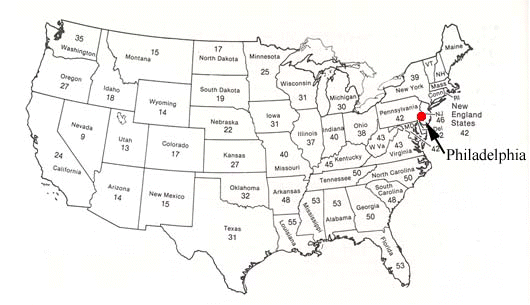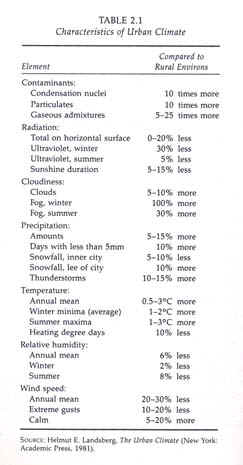| CLIMATE |
||
| Philadelphia is located in
a region that receives a significant amount of precipitation throughout the year. This water is crucial to the survival of all living things.
Rain and snowfall in the Eastern United States is divided fairly evenly throughout
the four seasons, with summer being typically the driest season. Temperatures
fluctuate throughout the year: cool in the winter months and warm in the summer. Philadelphia receives approximately 42 inches of rain every year. Where does it all go? |
Mean annual precipitation in the conterminous United States (in inches) * Soil, Water, and Related Resources in the United States. p192.
|
|
| The behavior of climate in
cities is significantly different than in rural areas.
The materials and forms that compose cities alter natural climatalogical processes.
Temperatures rise from heat stored and radiated from hard surfaces; wind is more gusty in places, but overall decreased by tall buildings; there are more clouds and more rain; pollution is greater. Instead of viewing these phenomena as detrimental to the city and its inhabitants, they should be accommodated in the design of urban spaces to take advantage of the unique urban climate. |
|
|
|
|
REFERENCES
|


